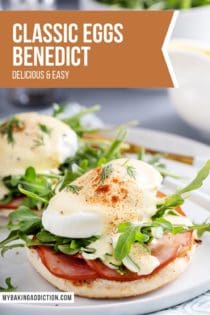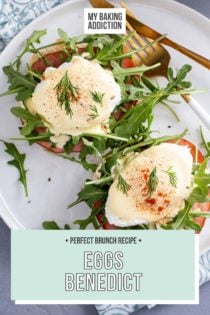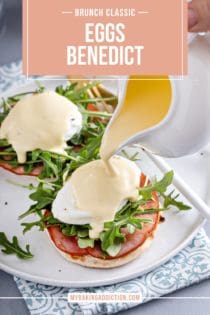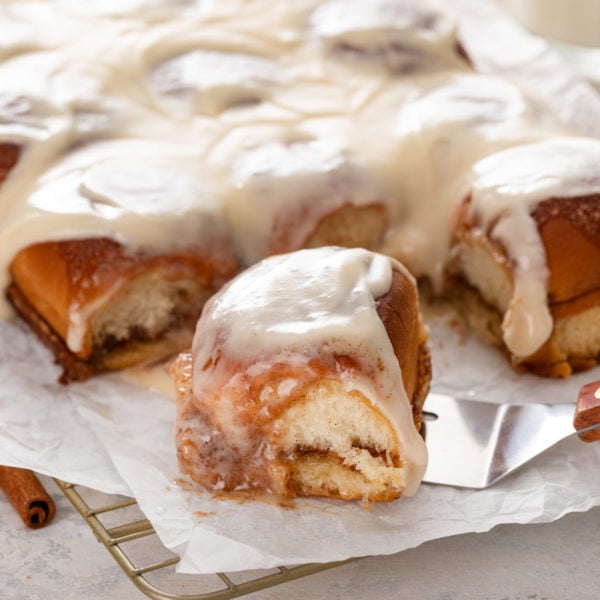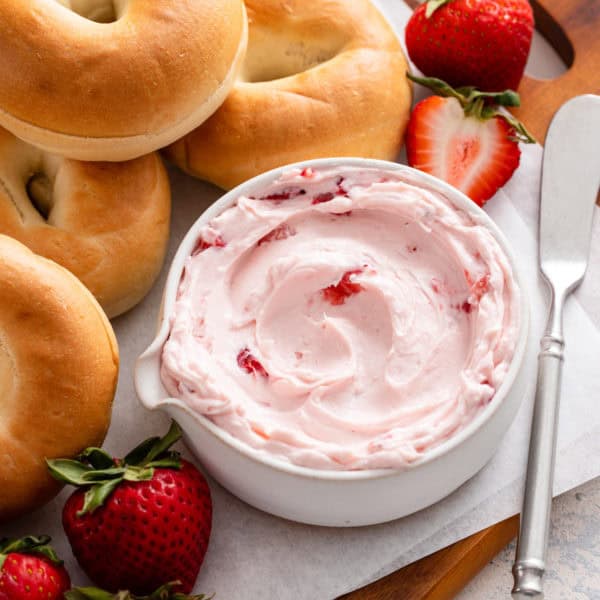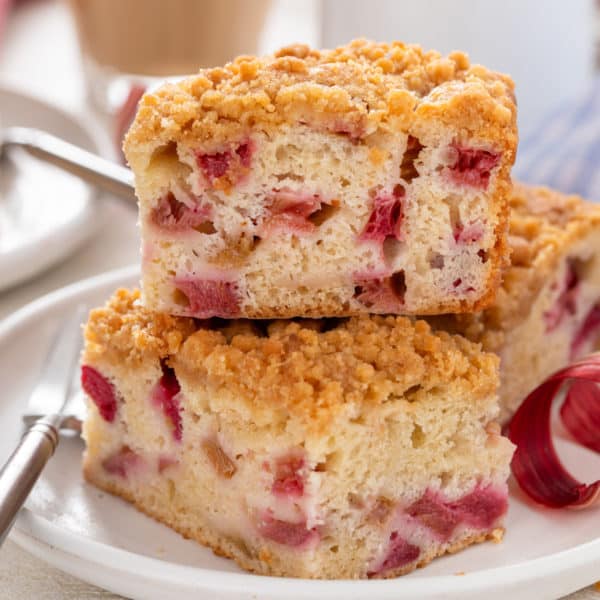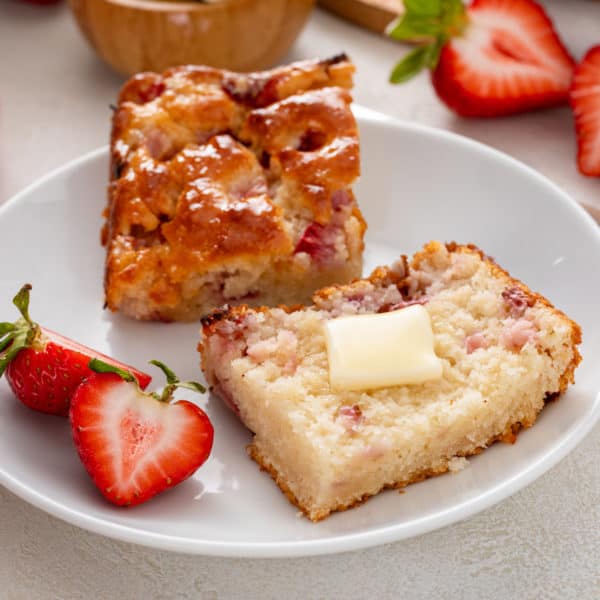This post may contain affiliate links. Please read our privacy policy.
With its english-muffin base, poached eggs, and silky hollandaise sauce, eggs benedict is a brunch classic! With this eggs benedict recipe, you can impress your friends and family by serving a restaurant-style brunch right at home.
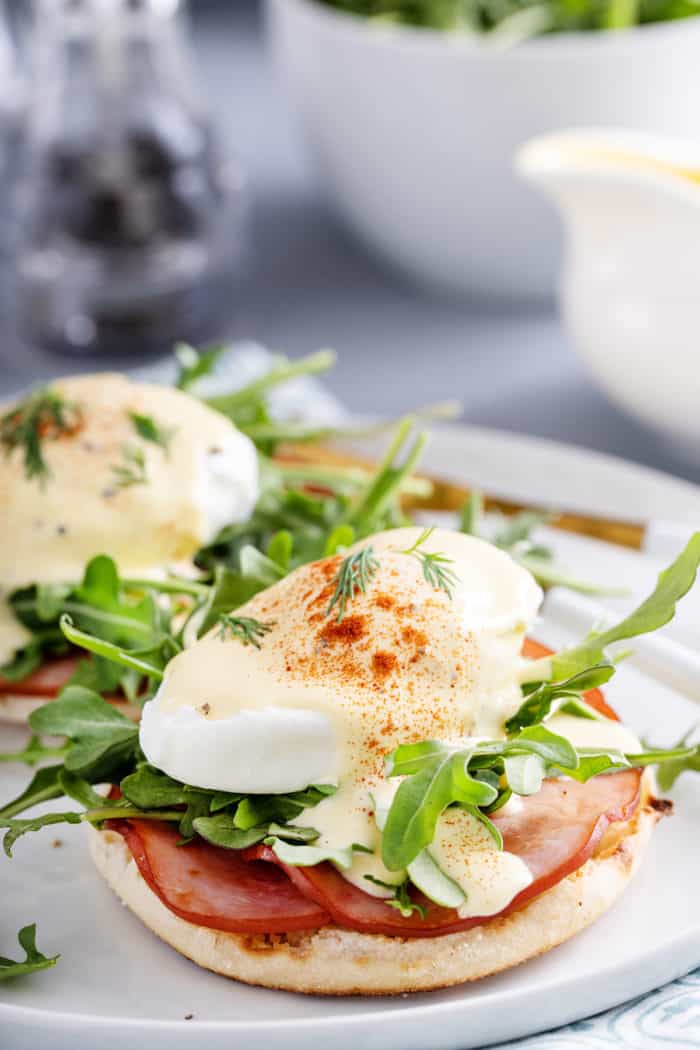
I’ve said it before and I’ll say it again: I love brunch season.
Between Easter and Mother’s Day and graduations, spring is all about brunches for me and I am so here for it.
I love making everything from croissant breakfast sandwiches to make-ahead breakfast casserole to strawberry rolls and more for brunch. Sometimes I go for a make-ahead recipe, sometimes I go for something I make that morning.
And if I really want to impress my friends and family, I make eggs benedict.
I think we’ve all had eggs benedict at a restaurant, right? It’s a dish that seems so fancy, but it’s totally doable to make at home! You’ll definitely want to add this to your Easter or Mother’s Day brunch menu.
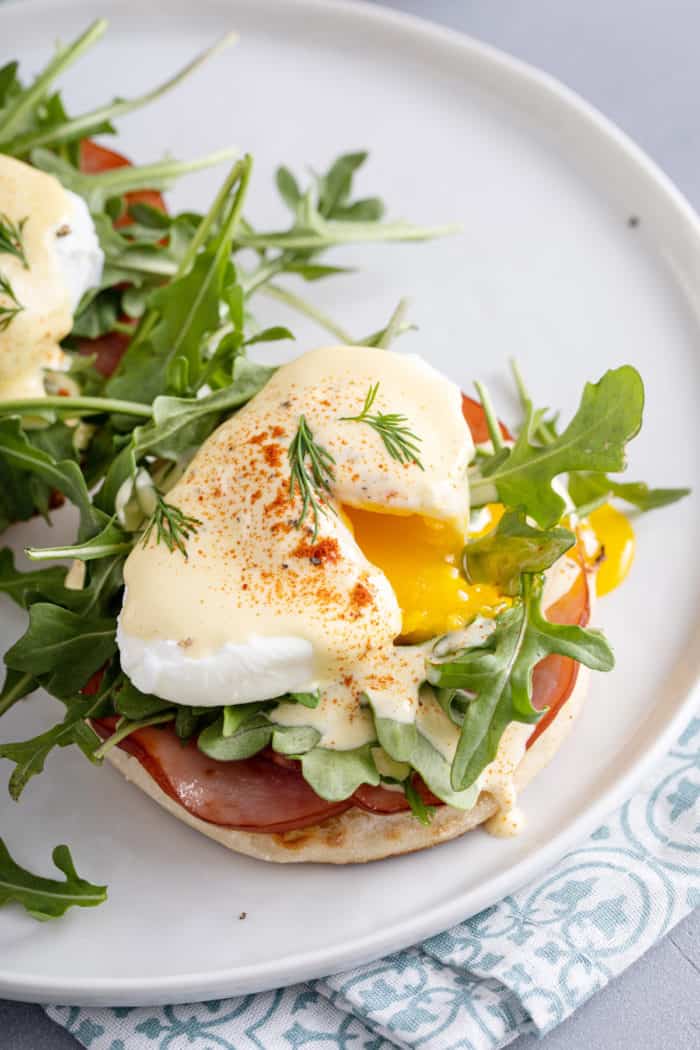
WHAT IS EGGS BENEDICT?
While there is a lot of debate about who first invented eggs benedict, there’s no debate about the fact that it’s delicious! Go to almost any classic brunch restaurant and you’ll find at least some version of eggs benedict on the menu.
Classic eggs benedict consists of a halved english muffin, with each half topped with a slice of canadian bacon, a poached egg, and hollandaise sauce.
Because it’s so popular in restaurants and because it has a few different components, a lot of people avoid making eggs benedict at home. But it’s actually not as difficult as you might think and is perfect for a special brunch!
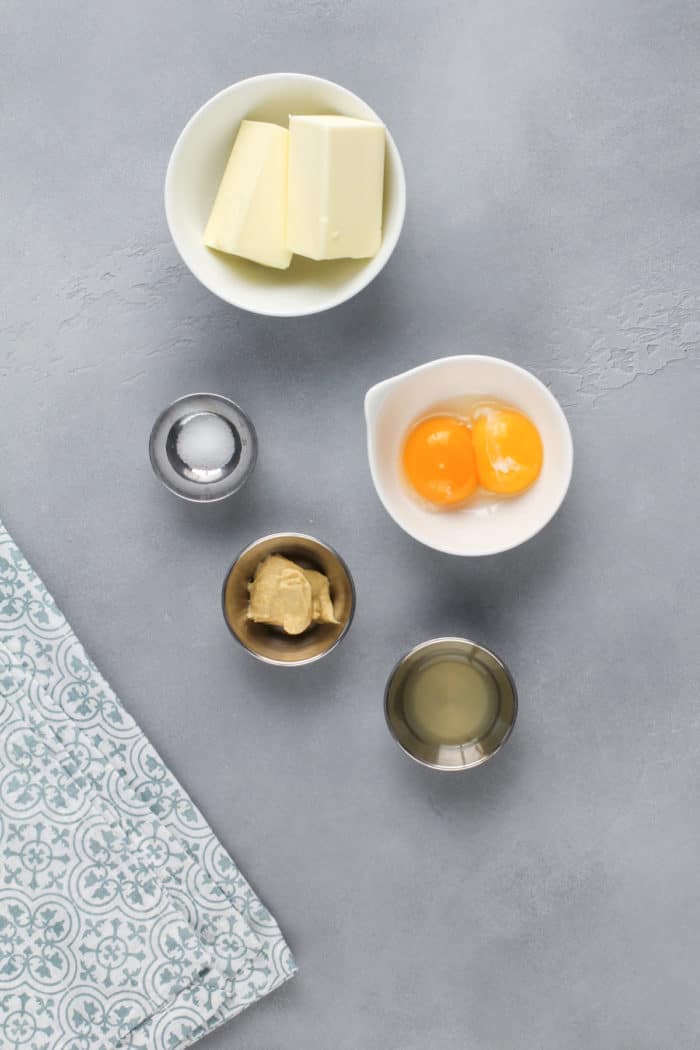
What is hollandaise sauce?
Hollandaise sauce is one of the French “mother sauces,” which just means that it’s a base sauce that can be changed in a ton of different ways for different dishes.
Hollandaise is made primarily from butter, eggs, and lemon juice. The fat in the butter and the acid in the lemon juice normally wouldn’t mix together, but the egg helps the two to form a thick, silky sauce.
Hollandaise sauce is most famously used on eggs benedict, but it’s just as delicious over steamed or roasted asparagus or broccoli, with poached salmon, over steak, or even as a dipping sauce for french fries. Honestly, the sky’s the limit!
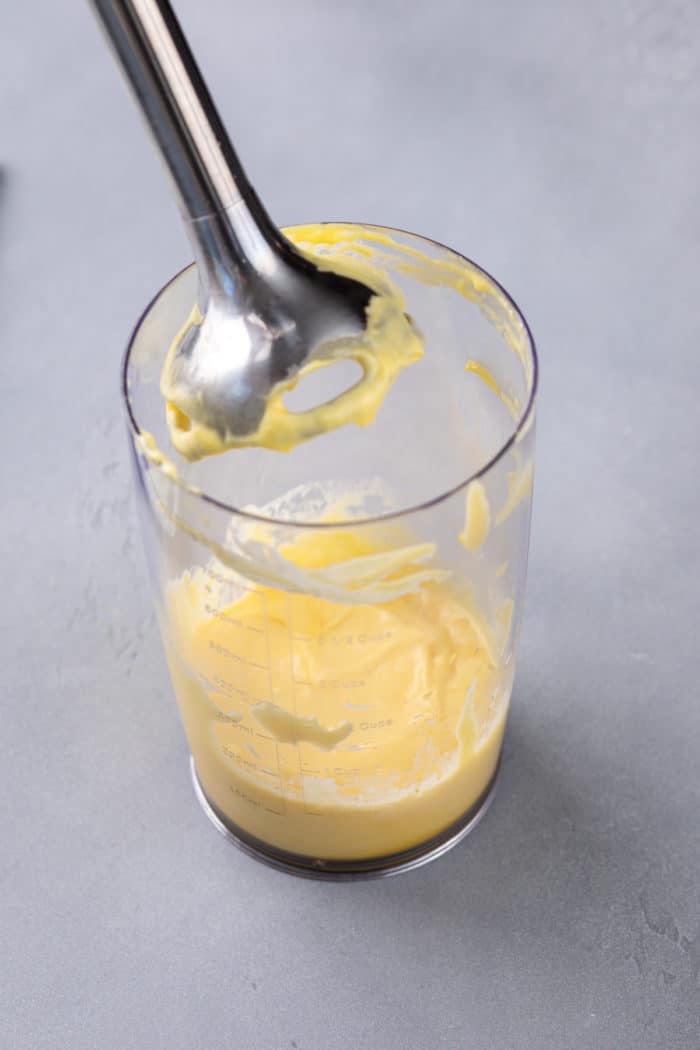
HOW TO MAKE MY EGGS BENEDICT RECIPE
Don’t be intimidated by the idea of making this dish at home. This eggs benedict recipe is much more approachable than you would think and will make for the very best brunch!
Keep reading and we’ll talk through the different components of the recipe, as well as how to prep some things ahead of time.
Recipe components
There are a few components to a classic eggs benedict recipe, including:
- English muffins
- Canadian bacon or ham (optional, see “recipe variations” for more ideas)
- Poached eggs
- Hollandaise sauce
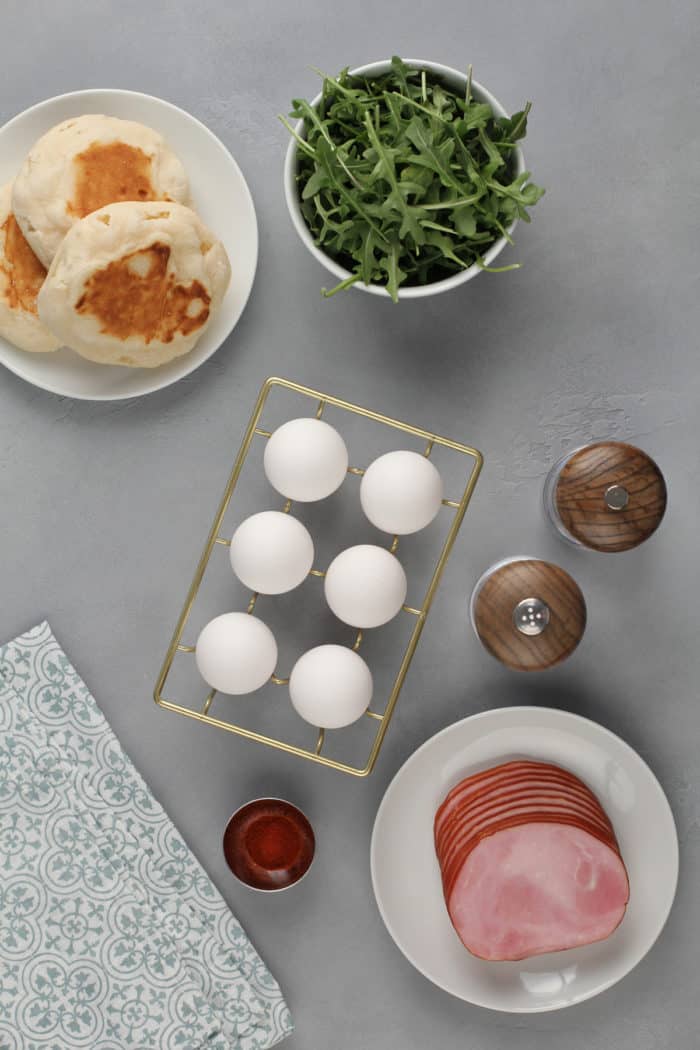
I think since you’re making the hollandaise and poaching the eggs, you should totally use your favorite store-bought English muffins. But there are lots of recipes out there for homemade English muffins if you really wanna be an overachiever.
You could even use slices of toasted English muffin bread if you want!
Don’t stress about poaching the eggs, either. Learn how to poach eggs and you’ll see how easy they can be. You can even prep them ahead of time.
As for the hollandaise? You can make it by hand, but I prefer to use a blender!
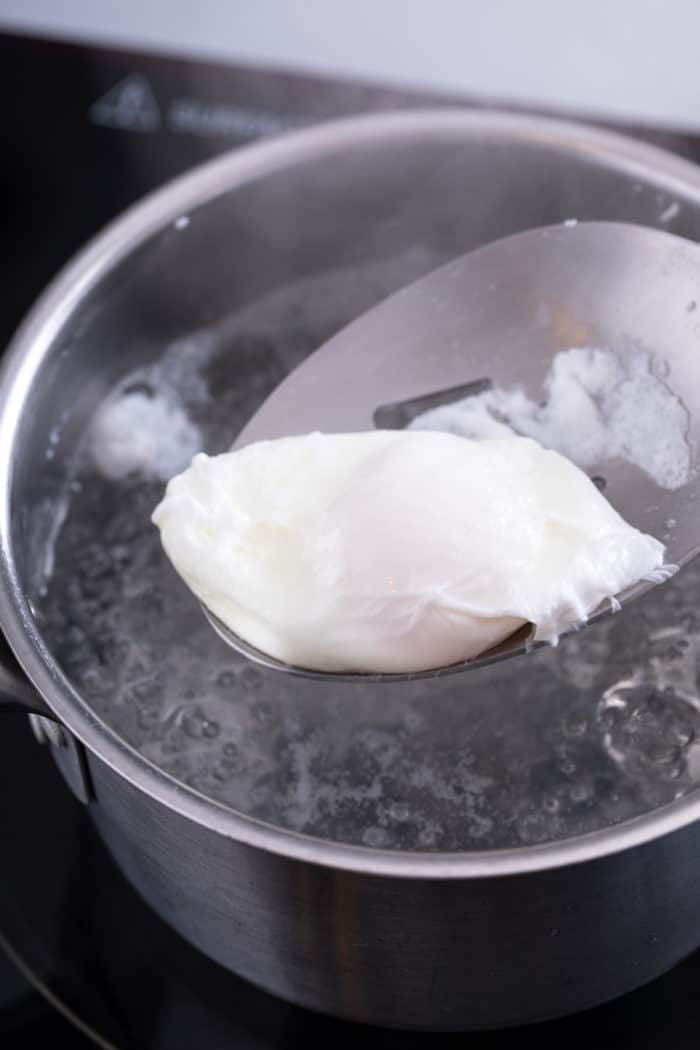
Making the hollandaise
Making blender hollandaise is the only way to go, in my opinion. I’ve whisked it by hand before, but it’s just as good and it’s way easier in the blender!
To start, melt salted butter in a small saucepan over medium-low heat. You want the butter to be warm when you add it to the other ingredients.
In a blender or in a large measuring cup with an immersion blender, combine egg yolks, lemon juice, mustard, and salt. The mustard isn’t traditional, but I like the tang it adds to the sauce.
Now, with the blender running, very slowly stream in the warm melted butter. Start off with just a few drops at a time, then build up to a heavier stream as the hollandaise starts to come together.
Once you’ve added all of the butter, give the sauce a taste. If you want a thinner sauce, stream in some hot water (make sure it’s hot!) a bit at a time. You can also add more seasoning – I always add more lemon because I like a lemony hollandaise.
If you want a little bit of heat, you can also add a pinch of cayenne pepper or a few dashes of hot sauce to the sauce.
I find that making hollandaise in the blender makes it way less likely to split, but using a bit of hot water can bring it back together if it does split. Stream in a few drops of hot water while running the blender and it should become silky again.
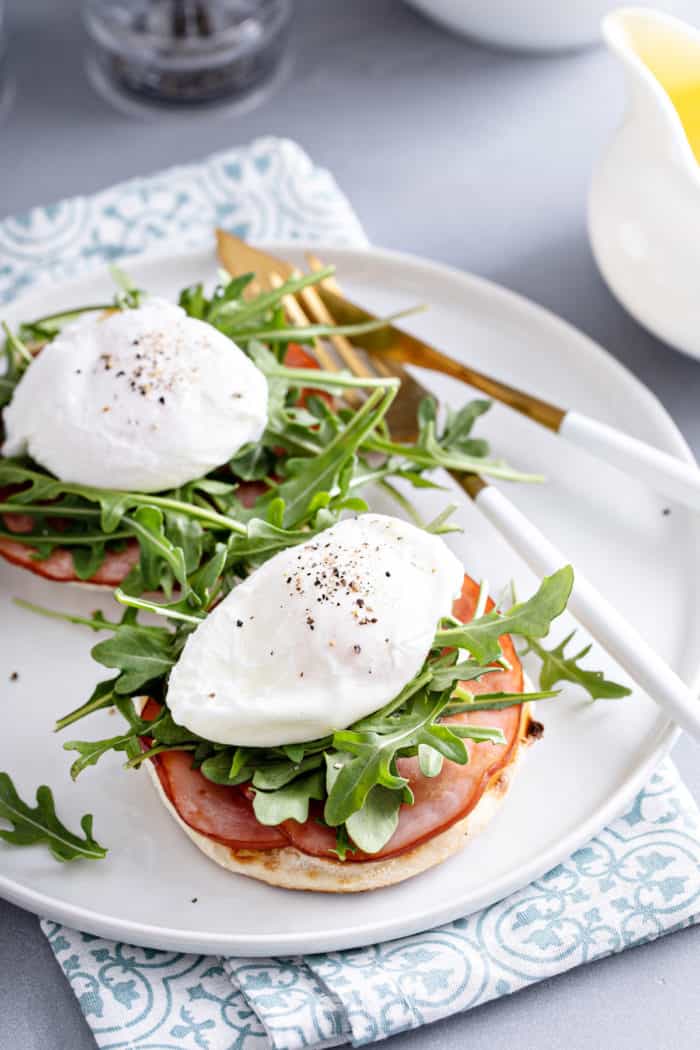
Assembling the eggs benedict
When you’re ready to assemble your eggs benedict, split the English muffins in half and toast them.
Top each toasted English muffin half with a slice of canadian bacon or ham (if using) and a poached egg. Top with a pinch of salt and pepper, then spoon some of the hollandaise sauce over each egg.
I like to garnish with a sprinkle of smoked paprika and a sprig of dill before serving immediately.
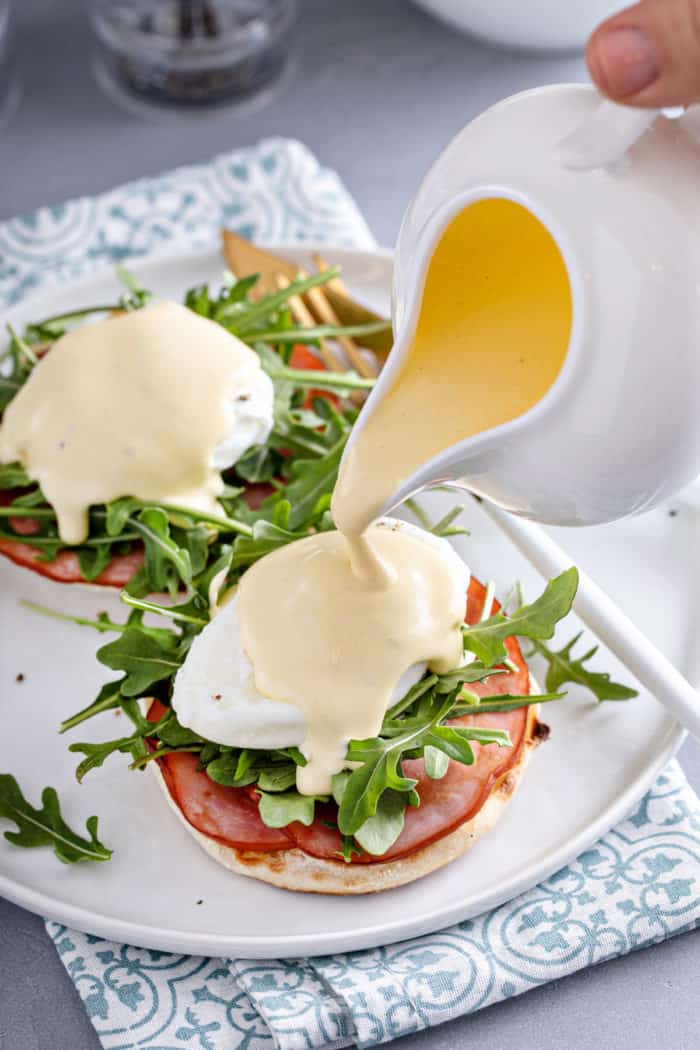
RECIPE VARIATIONS
Even though eggs benedict is traditionally made with Canadian bacon (or ham), there are lots of variations out there, some of them even with their own names!
Instead of, or in addition to, the ham or Canadian bacon, try:
- Thick slices of American bacon
- Smoked salmon (called “eggs atlantic”)
- Lump crab meat
- Sauteed spinach (called “eggs florentine”)
- Fresh arugula
- Steamed asparagus
- Crab cakes (called “eggs Chesapeake” or “crab cakes benedict”)
- Seasoned tomato slices
- …and more!
If you think it would taste good with a runny poached egg and hollandaise sauce, give it a try on your eggs benedict.
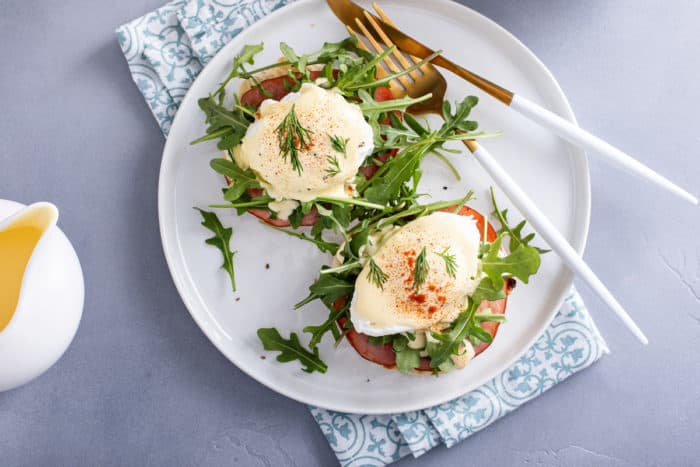
MAKE-AHEAD TIPS
If you’re making brunch for your friends, you probably don’t want to be in the kitchen worrying about poaching a bunch of eggs and making your hollandaise at the last minute.
Luckily, you can prep the components for your eggs benedicts ahead of time!
Poach the eggs a few hours or even the night before. Hold them in an ice bath (or in the fridge) and dip them into simmering water for a minute to reheat them before serving.
You can also make the hollandaise ahead of time. Store it in the fridge in an airtight container for up to a day.
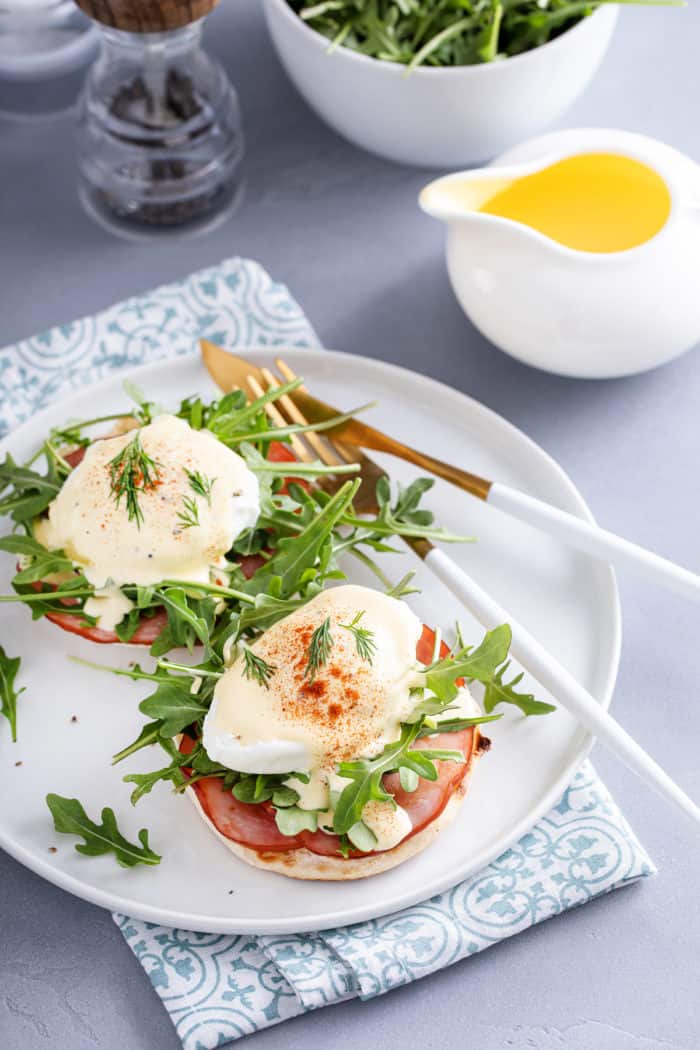
To reheat it, use a double boiler over very low heat and stir or whisk the sauce constantly. Remove it from the heat as soon as it is warm.
Hollandaise sauce can split when reheated, but whisking or blending in a few drops of hot water can bring it back together if it does.
From there, all you have to do is toast the English muffins and plate the benedicts! Oh, and enjoy all of the compliments you will receive.
Eggs Benedict
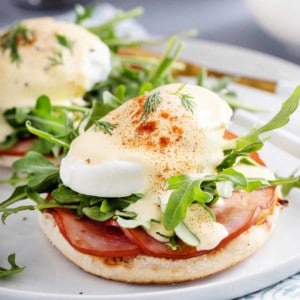
Ingredients
For the hollandaise:
- ½ cup salted butter
- 2 egg yolks
- 1 tablespoon lemon juice plus more to taste
- 1 teaspoon dijon mustard
- ¼ teaspoon fine sea salt
For the eggs benedict:
- 6 poached eggs
- 3 English muffins
- Salt and pepper
- Smoked paprika
Optional additions:
- Sliced ham or Canadian bacon
- Cooked American bacon
- Lump crab meat
- Smoked salmon
- Sautéed spinach
- Fresh arugula
- Steamed asparagus
- Seasoned tomato slices
Instructions
Make the hollandaise:
- Melt the butter in a small saucepan over medium-low heat.
- In a blender or in a large measuring cup with an immersion blender, combine the egg yolks, lemon juice, mustard, and salt.
- With the blender running, slowly stream in the warm melted butter, starting with a few drops at a time and gradually increasing the stream as the sauce starts to emulsify.
- Once all of the butter has been added, you can stream in hot water, a tablespoon at a time, if you desire a thinner hollandaise.
- Taste for seasoning, adding additional lemon juice or salt if desired.
To assemble:
- Poach the eggs (see notes). Set aside.
- Split the English muffins, toasting each of the halves.
- Top each English muffin half with any of your desired optional additions – a slice of Canadian bacon is considered traditional, but feel free to use anything you like. Top with a poached egg; season lightly with salt and pepper.
- Spoon the fresh hollandaise over each egg. Garnish with a sprinkle of smoked paprika and a sprig of dill, if desired. Serve immediately.
Video
Notes
Nutrition
Nutrition information is automatically calculated, so should only be used as an approximation.
